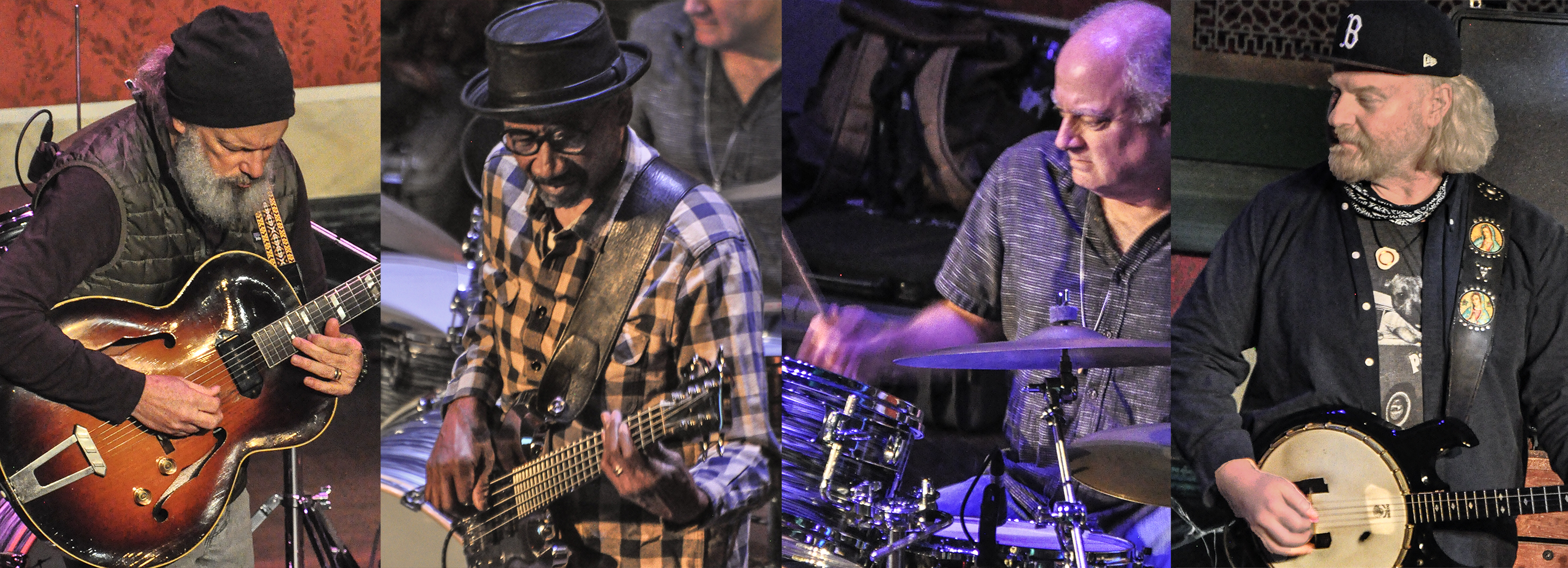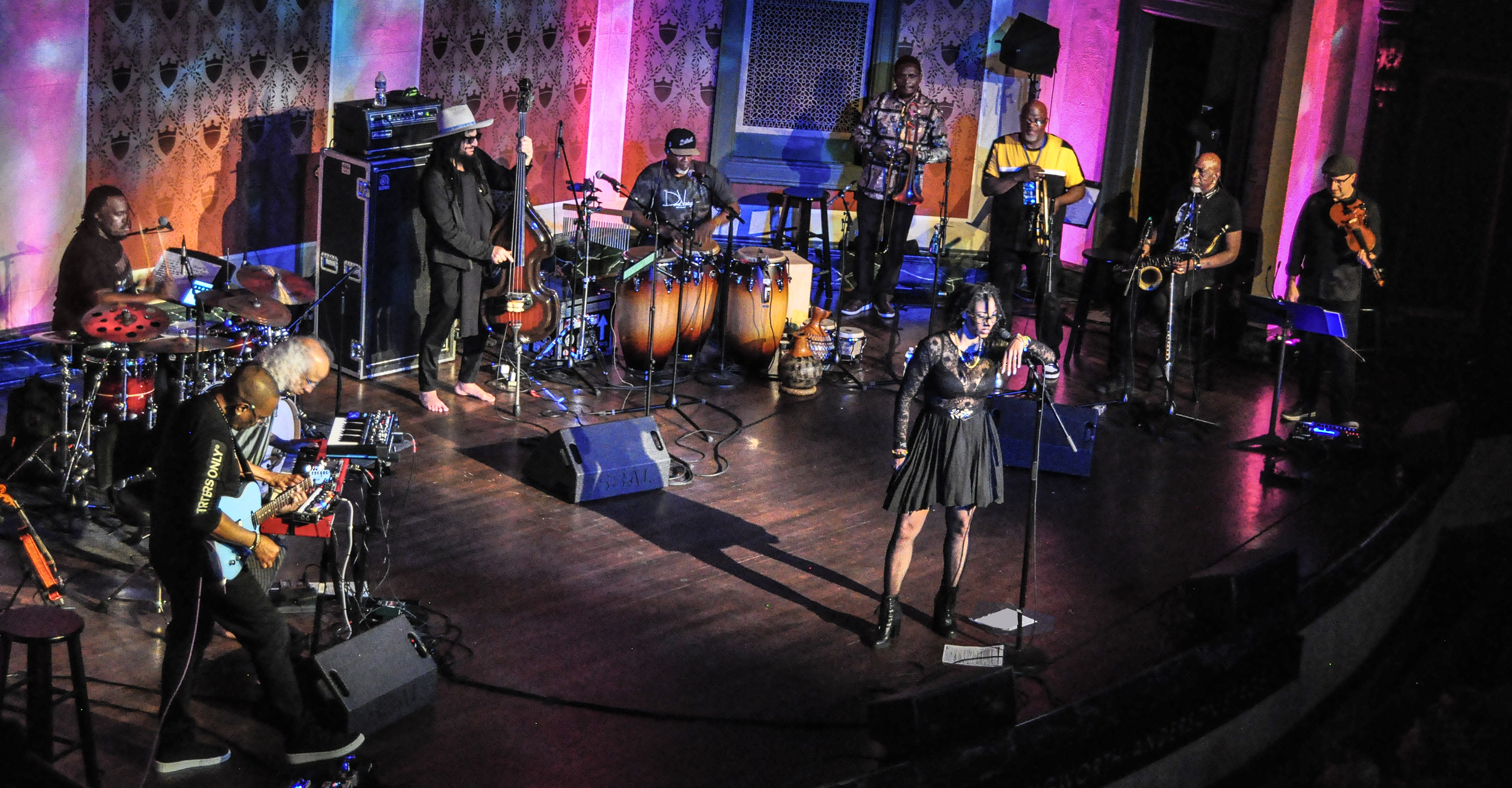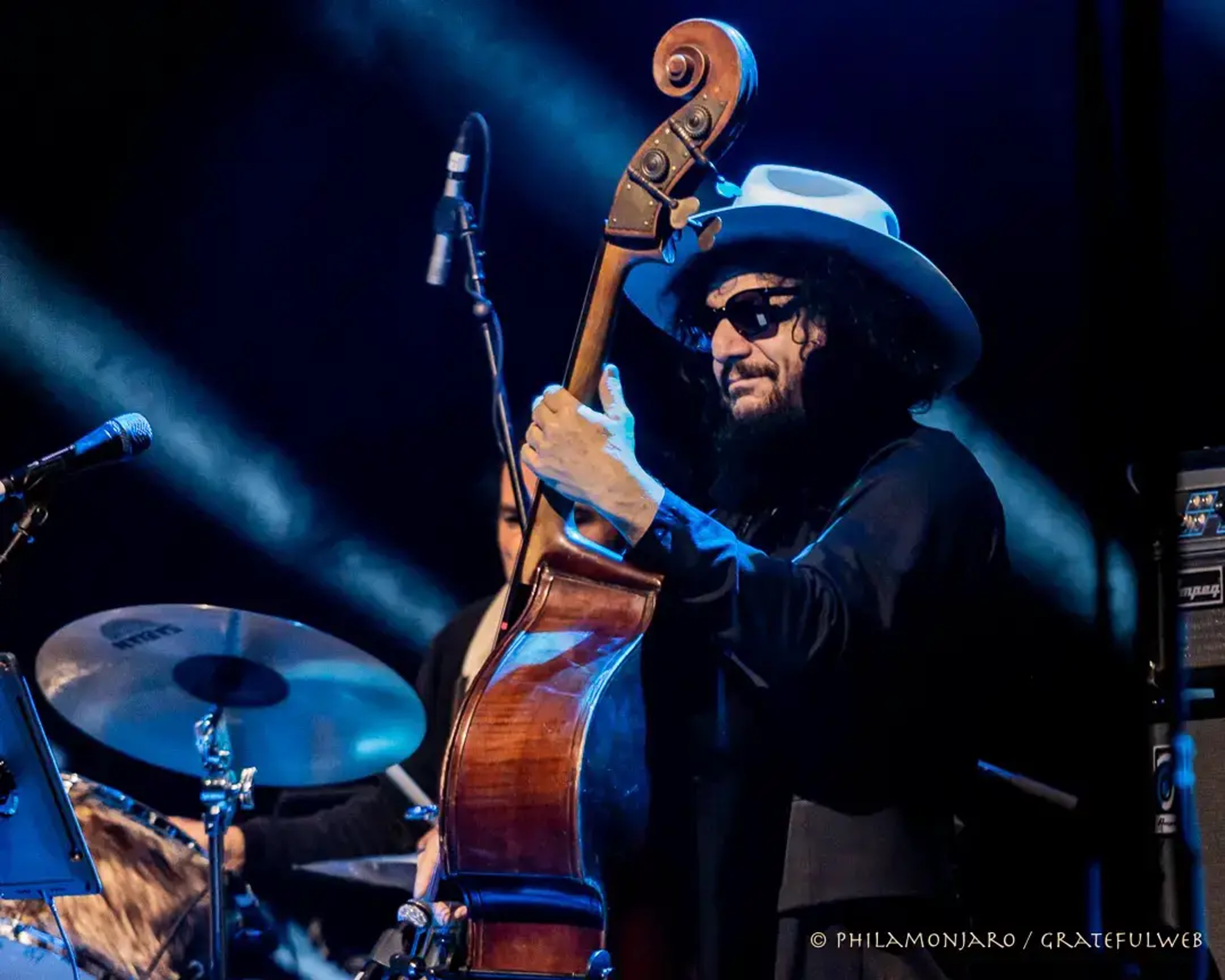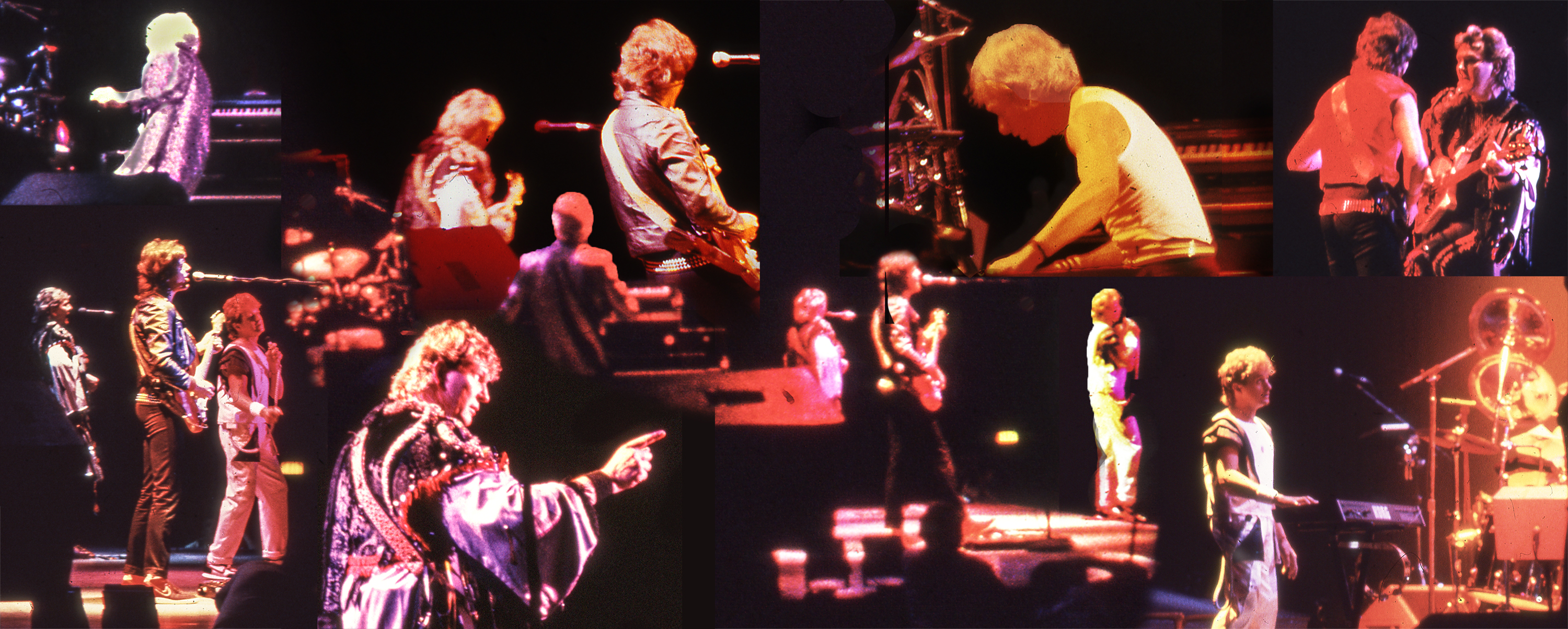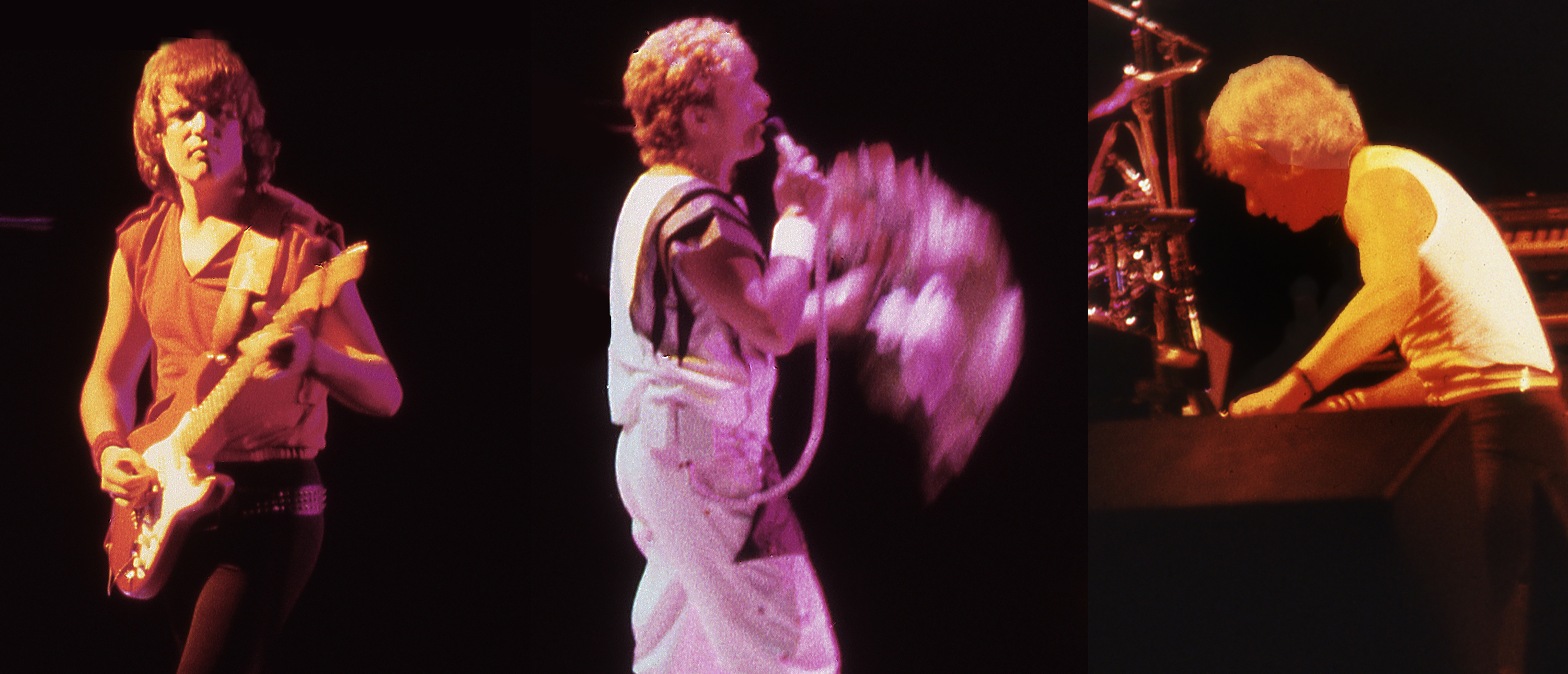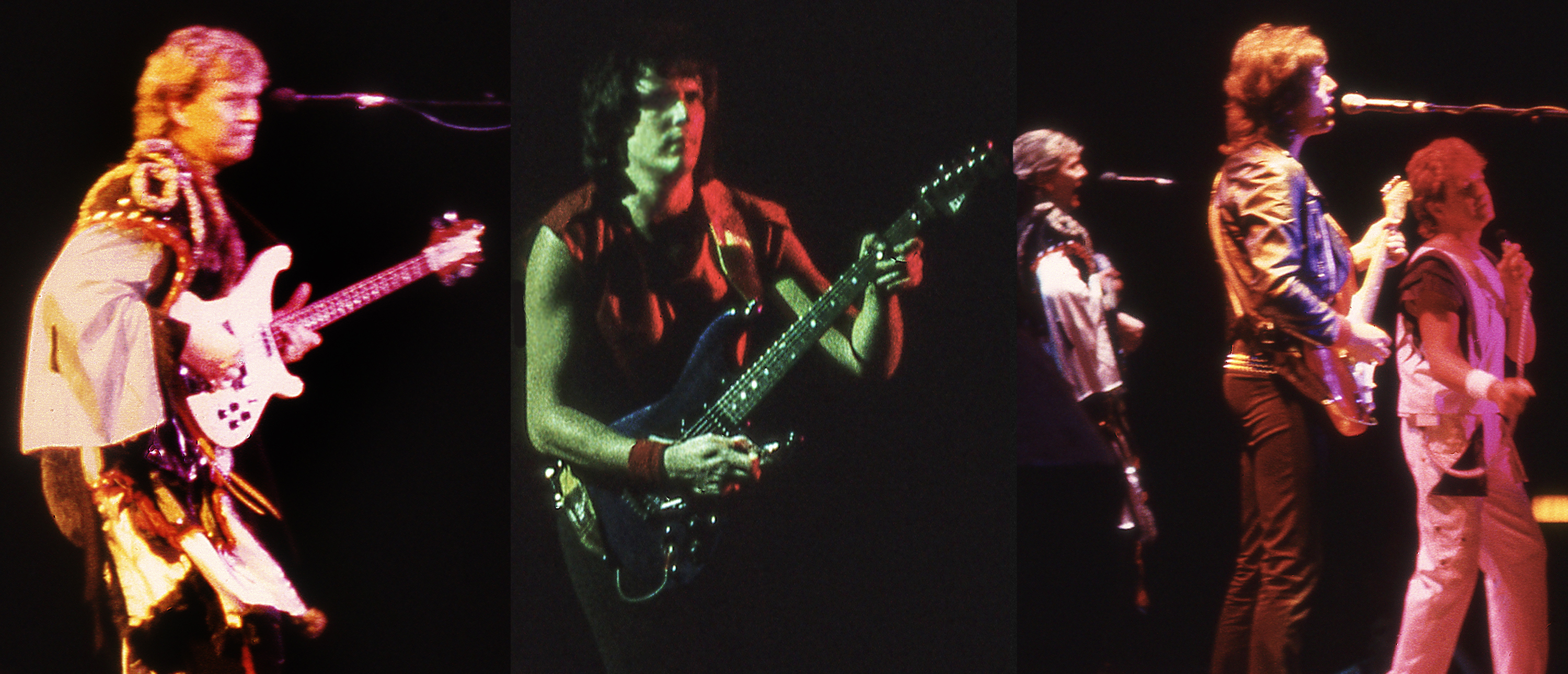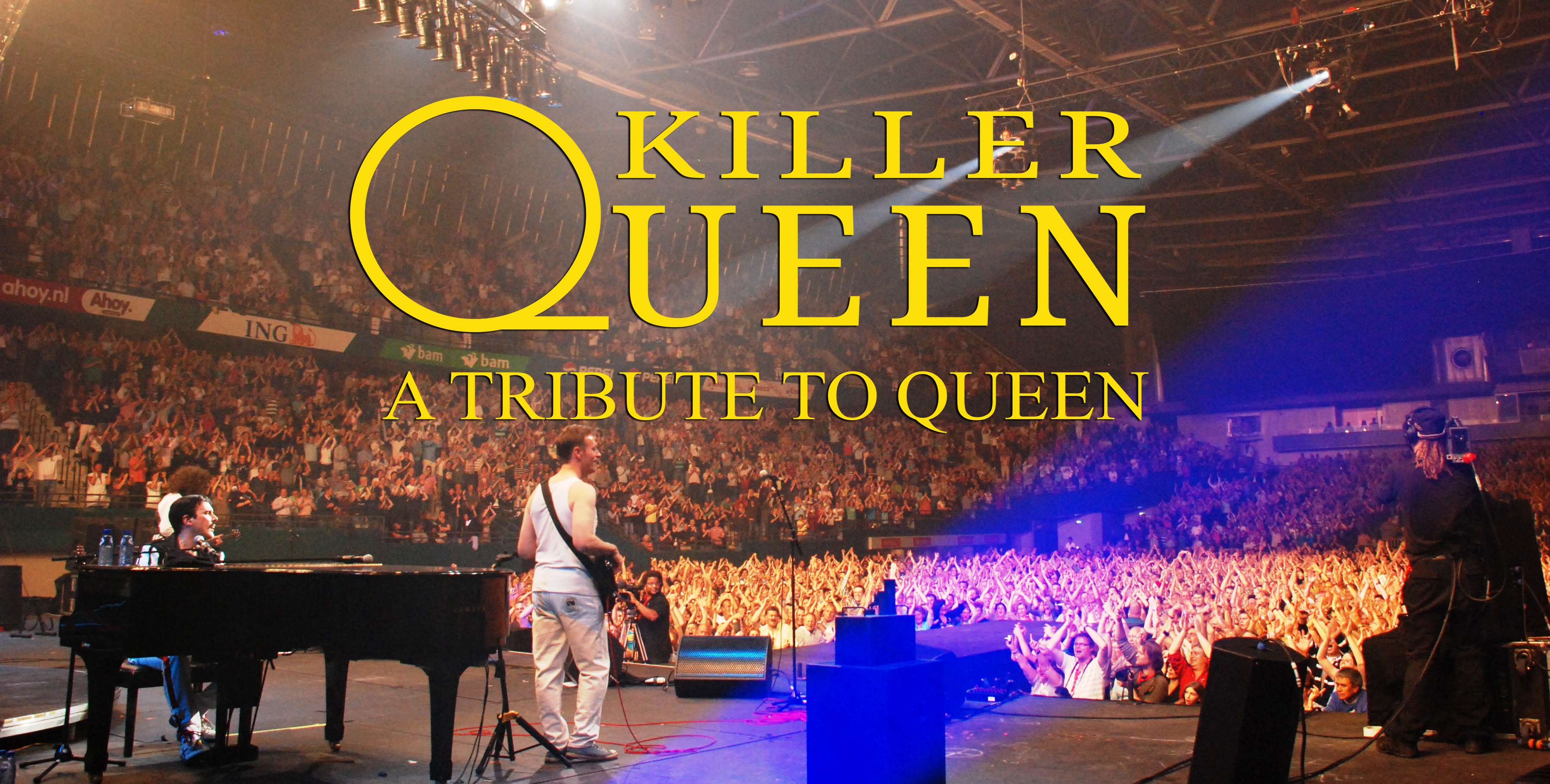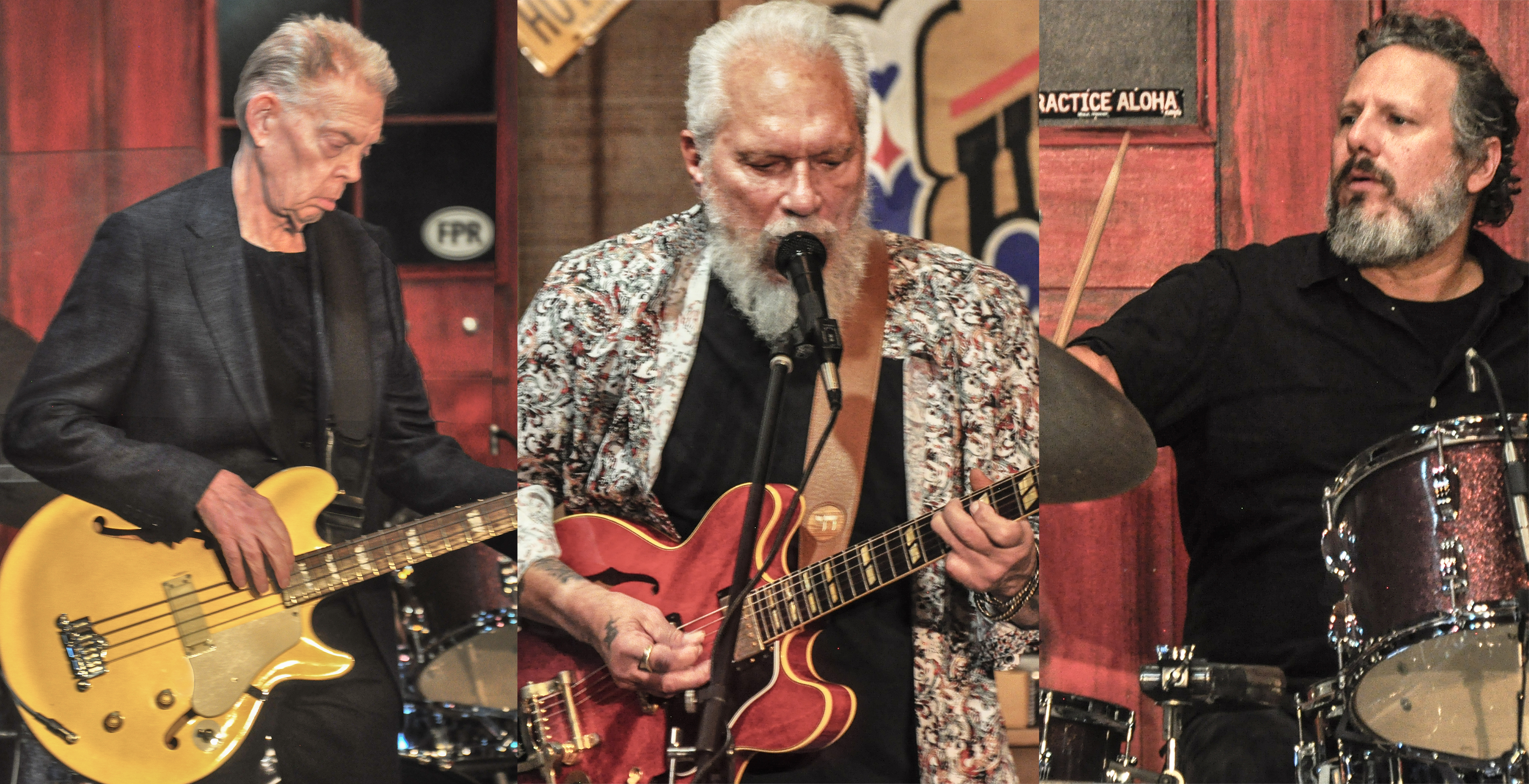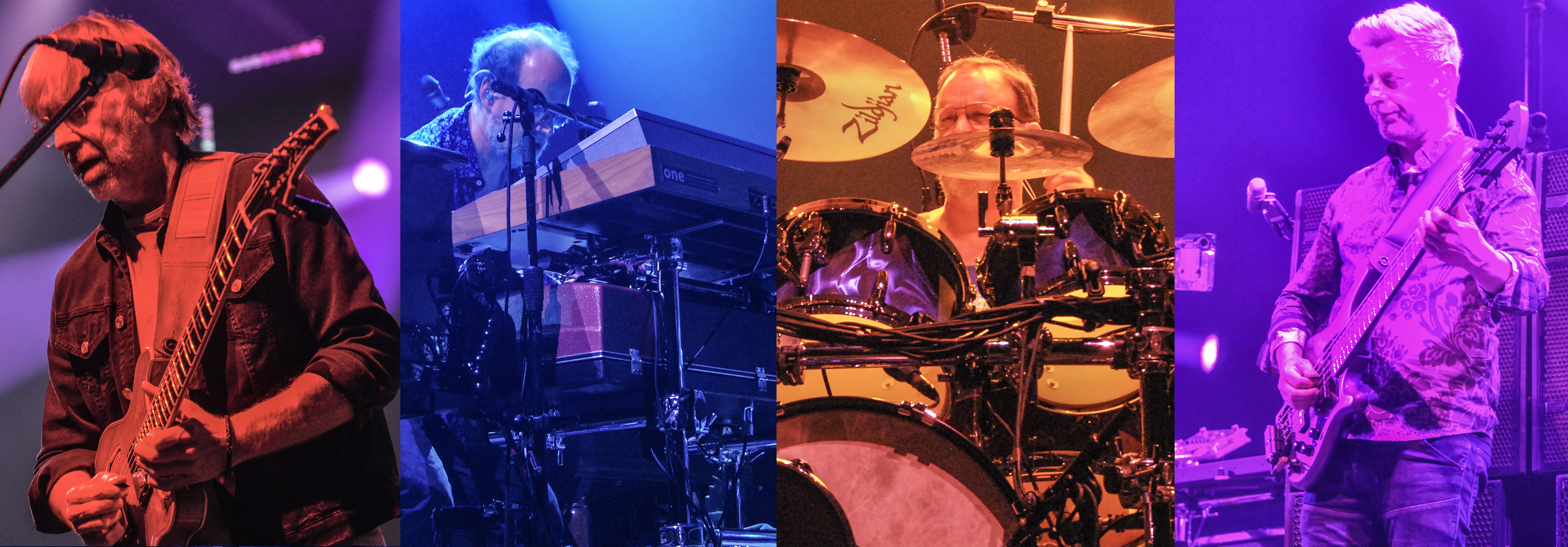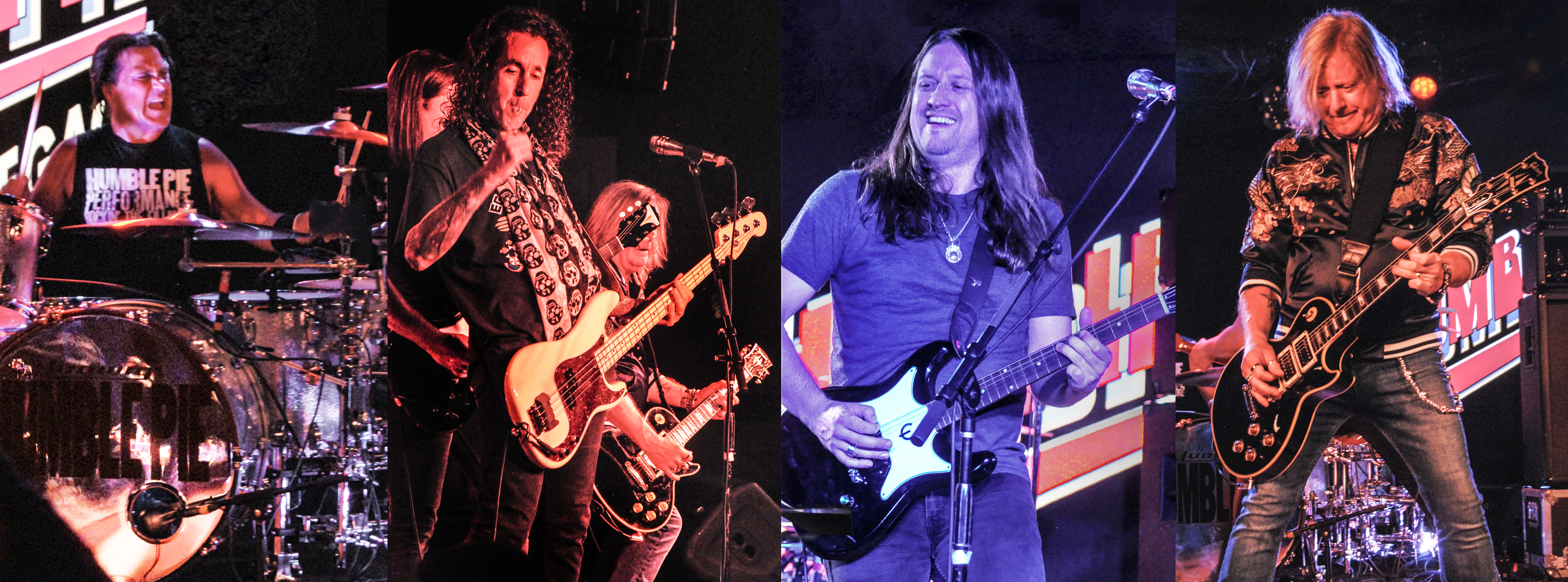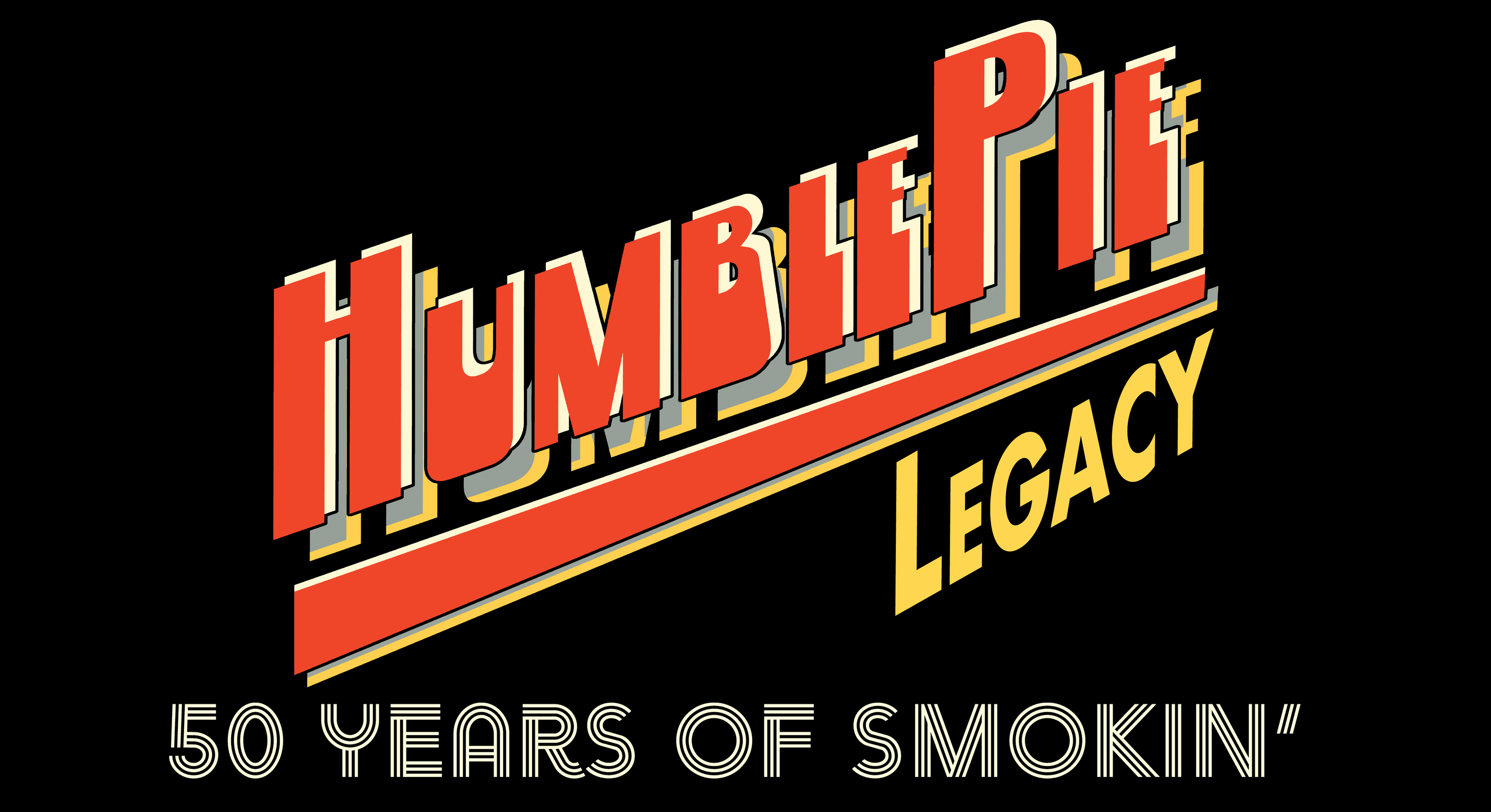Please don’t murder me if you think this review of the acclaimed jam-fusion band Jazz Is Dead runs hard to the gushy side. But even after all these years – more than 50 years of concert-going – I’m still a pretty impressionable guy (It’s true. . .) and it was only my first time seeing them. So there was a lot to take in.
JID’s show at Cincinnati’s Memorial Hall on December 5 was like a creeper buzz that had me from the first hit. But it still sneaked up on me, bowled me over, and left me with a dropped jaw at many points. Even though I was also doubling as a photographer for the show, I suspected that it would be the kind of performance that I’d want to be ‘present’ for, not distracted by camera settings and missed moments. I quickly found this was exactly the case. And I was mighty, mighty glad to be there.
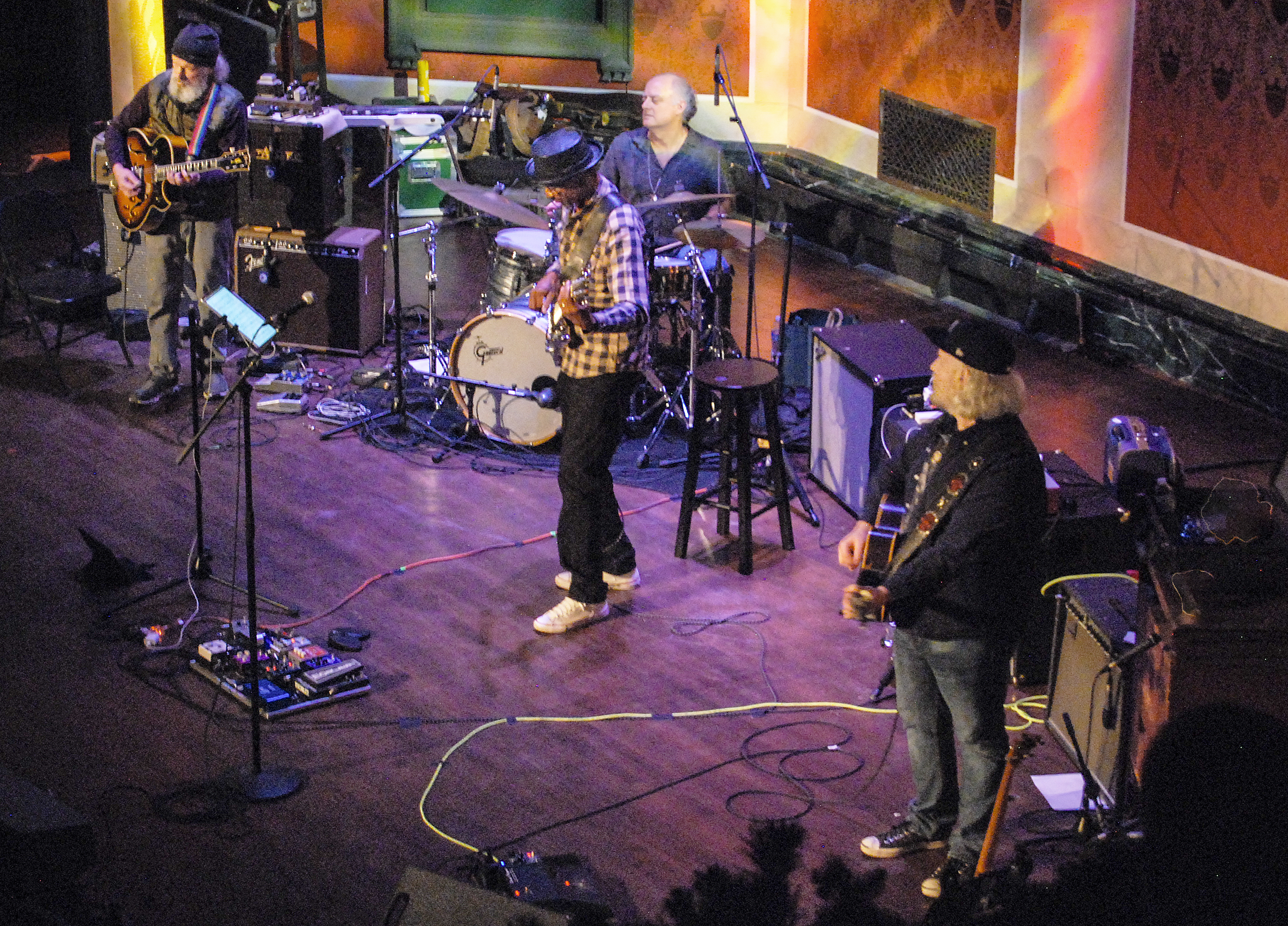
As it turned out, I didn’t even raise my cameras for a good ten minutes into the show – just allowed myself to sink into the music and feel the bubbling chemistry. And when I did lift a lens, it was more when I sensed a moment was about to peak, and I just shot quickly, trying to snag some of those peaks in burst mode. Performing all Grateful Dead and Garcia source material on this night (JID are known to do some other musical name-checking, dipping a bit into Miles Davis and John McLaughlin on some nights, for example.), the band were delightful at every turn, as the four veteran musicians wove a magical, one-of-a-kind tapestry for us, full of color, drama and emotion. It was definitely a night for being in the moment.
Pretty much crisply at 8:00 p.m., the four members of JID – bassist Alphonso Johnson, drummer Pete Lavezzoli, and guitarists Bobby Lee Rodgers and Steve Kimock – ambled onto the small, globe-light-bulb-rimmed, proscenium-arch stage of this historic Cincinnati theatre. (Within the last ten years, this atmospheric, 550-seat hall with pristine acoustics underwent a full restoration and has been preserved on the National Historic Register. Obviously, Johnson was especially struck by this preservation effort, as he had made a point to remark on how architecturally stunning the venue was at the end of the first set.)
The stage – with its reflective, polished floors – was flanked by a pair of large, plainly lighted Christmas trees. And, sentry-like, the two trees stood by almost as silent members of the band throughout the night. After arriving at their stage positions, the musicians checked over their connections and settings, played a few random riffs and drum rolls, and then just looked at each other with smiles as they started sweetly into the first song.
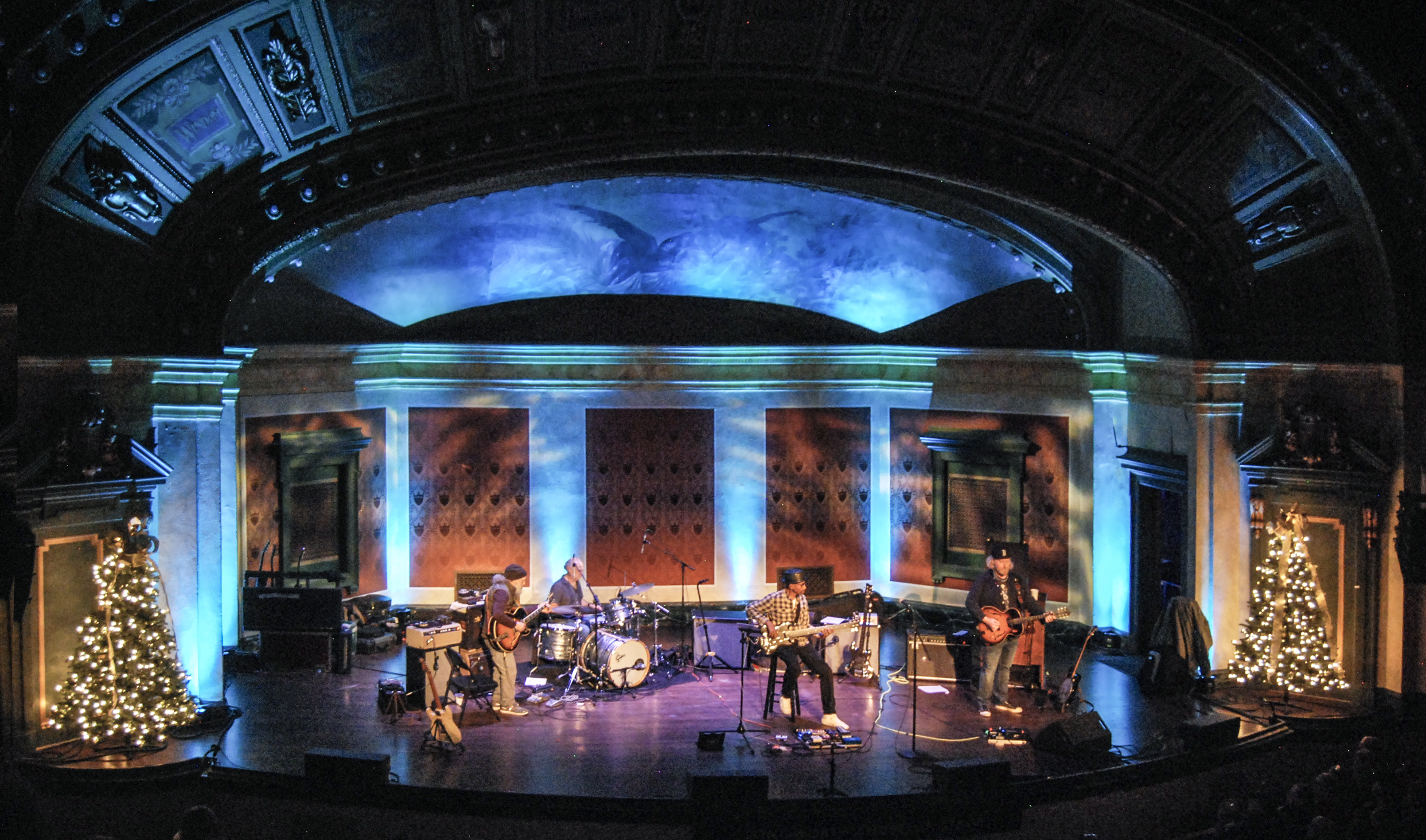
For a bit more self-disclosure, I should note that I had first became infatuated with the Dead in the mid-1970s. So it’s really no surprise then, with a personal GD sweet spot of 1972 to 1977, that I naturally found JID’s nine-song setlist to be dead-on, if you’ll pardon the expression. So, yeah, the guitarists pulled me in right from the first chiming arpeggio notes of “Here Comes Sunshine,” which opened into a nicely extended and gently tumbling, whitewater jam.
Knowing that song from GD’s 1973 album Wake of the Flood as well as I do (had never heard “Sunshine” performed live before, though), I could hear the lyrics in my head as the band played their all-instrumental version. Kimock’s guitar phrases handily took the place of the original’s topline melody. I know the band changes up their setlist every night, but, to me, it seemed like the perfect way to start the night.
Notably, from this very first song onward, second guitarist Bobby Lee Rodgers – known for his work with Col. Bruce Hampton and Warren Haynes, among others – provided a perfect foil for many of Kimock’s lead phrases by playing his electric banjo and his acoustic rhythm guitar through a Leslie speaker. Obviously, as this cabinet with rotating horn speakers is typically used with keyboards, the Doppler effect on Rodgers’ line-in signals gave the music an interesting and trippier organ-like texture. (In fact, he splits the signal so that it also runs into a standard guitar amp, giving a hybrid guitar/keyboard flutter to his tone.) There was even a moment in the show when Rodgers was comping hanging jazz chords behind Kimock that the Leslie tones gave his strums a more dissonant, three-dimensional, Bill Frisell-like edge in the midst of an otherwise sweeter harmonic setting. A quite intriguing sound to my ears.
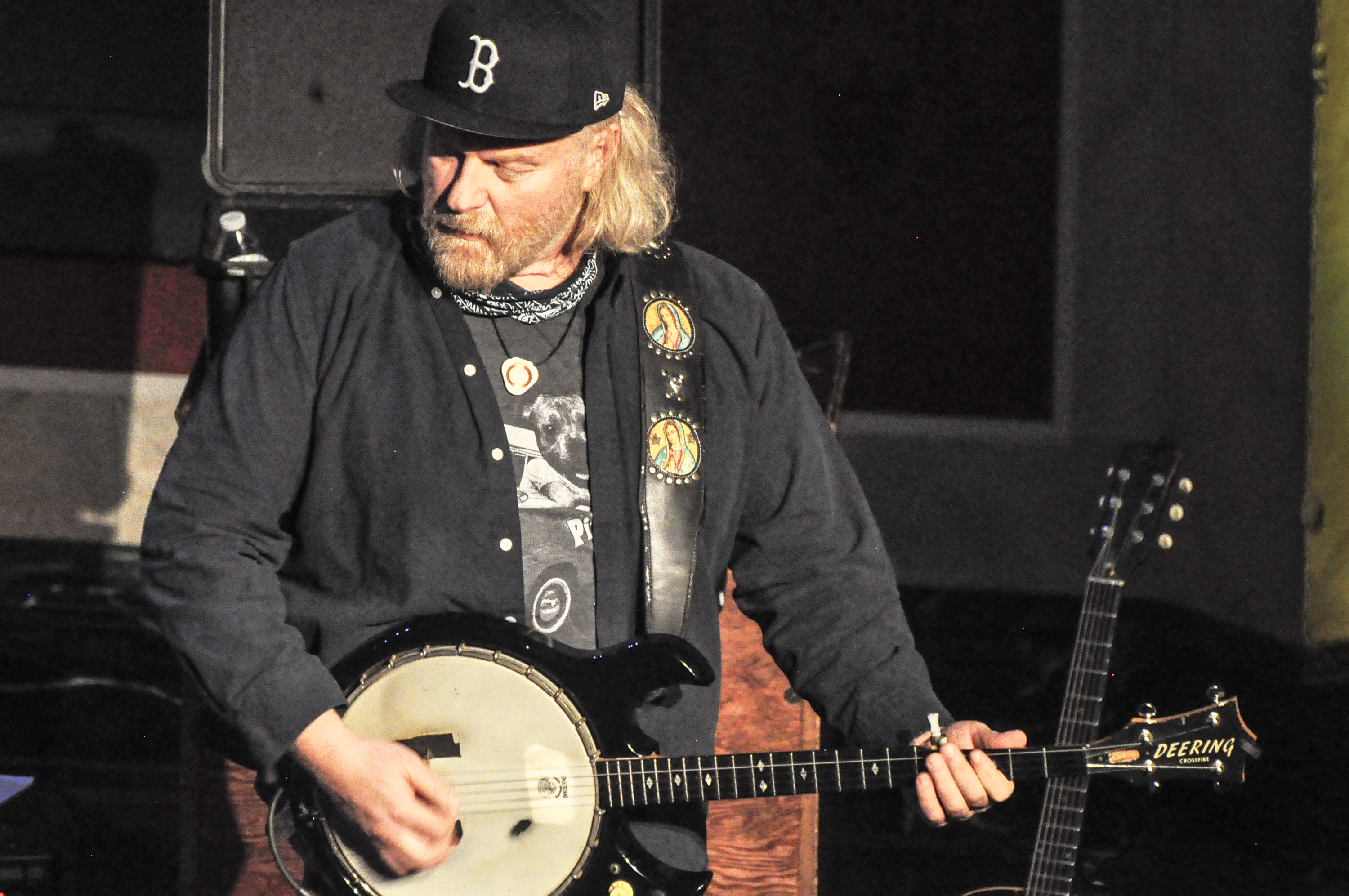
After the gently rolling and conversational “Sunshine” jam dissolved into a transitional, looping funk solo by bassist Johnson, the four musicians dipped a bit further back into the early 1970s, with a pair of songs from the Dead’s Europe ’72 album, “China Cat Sunflower” and “Cumberland Blues”. (True, studio versions of those songs came before that recording, but the live versions are much more a part of my own GD mythology. So, again, sweet-spot selections for me.)
Johnson had stepped in to set the groove for “China Cat” during his loop solo, and his bandmates generously built up the song’s repeating intro lick from the locked-in groove. When Kimock peeled off the song’s tell-tale first guitar lick, the audience cheered with immediate recognition. And though the very bouncy, cheery “Cat” was self-contained and did not segue into its traditional companion song, “I Know You Rider,” it was a fully fleshed-out version, with Rodgers supplying that well-burned-in lyrical melody and Kimock delivering Garcia’s bell-like Stratocaster notes.
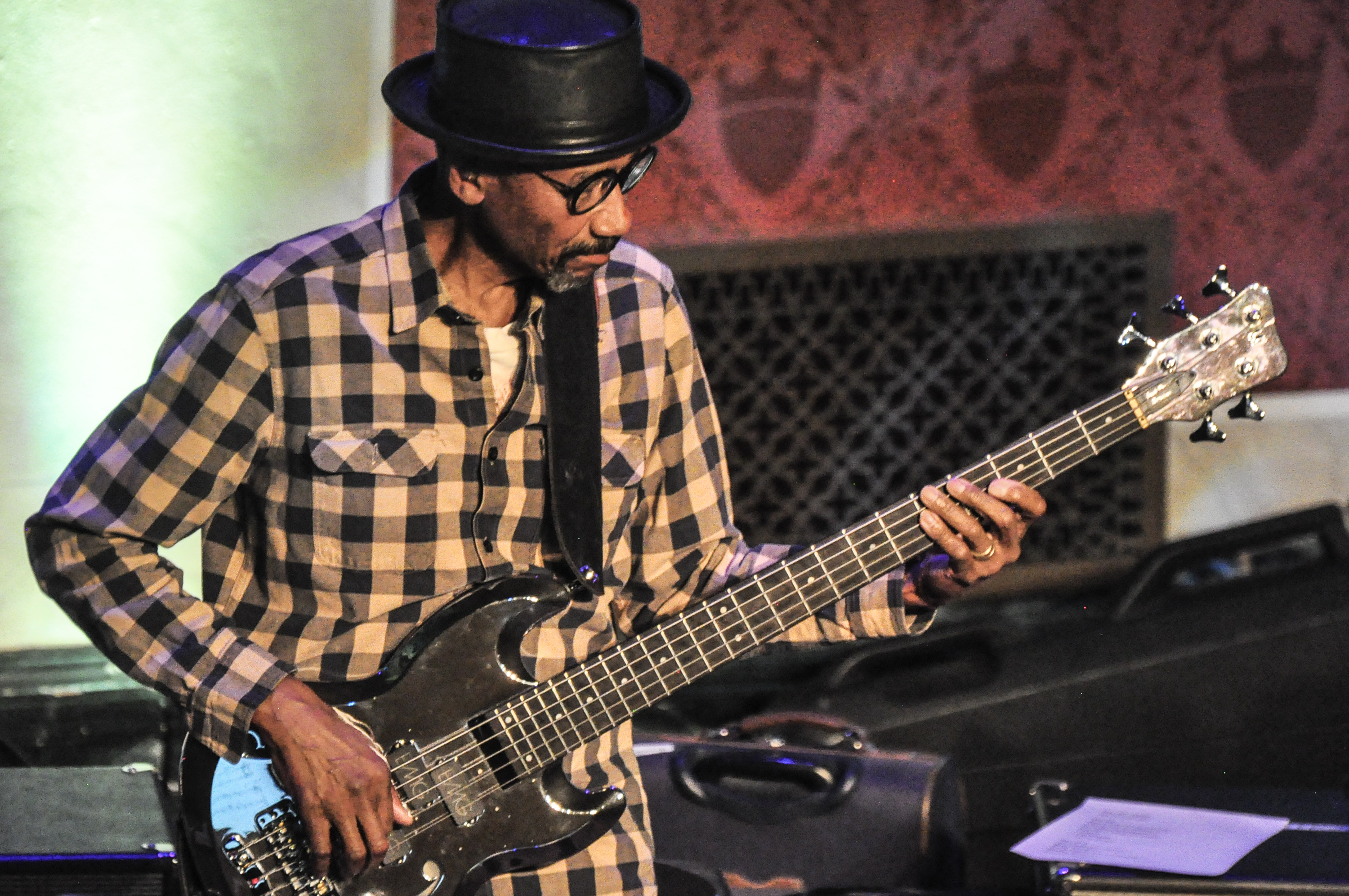
With drummer Lavezzoli taking a more prominent role in this lengthy and more dynamic jam, “China Cat” gave all the members a chance to display their flair for deeper, real-time improvisation. The drummer opened up shortly after they broke from the verse and chorus, swinging like crazy and surfing through the peaks with Johnson churning along with him. They're all amazing, but Lavezzoli – a superb drummer and longtime collaborator with numerous artists in the extended GD family – showed off his deep knowledge of the inner grooves of this Dead classic with his tempo changes and shading. And then there was Kimock’s ethereal slide guitar mid-section that took the audience on a journey above the clouds. Certainly, if the “Sunshine” jam had seemed a bit soft-focus and exploratory, the “China Cat” vamp felt as if the band had finally reached an edge-of-your-seat escape velocity.
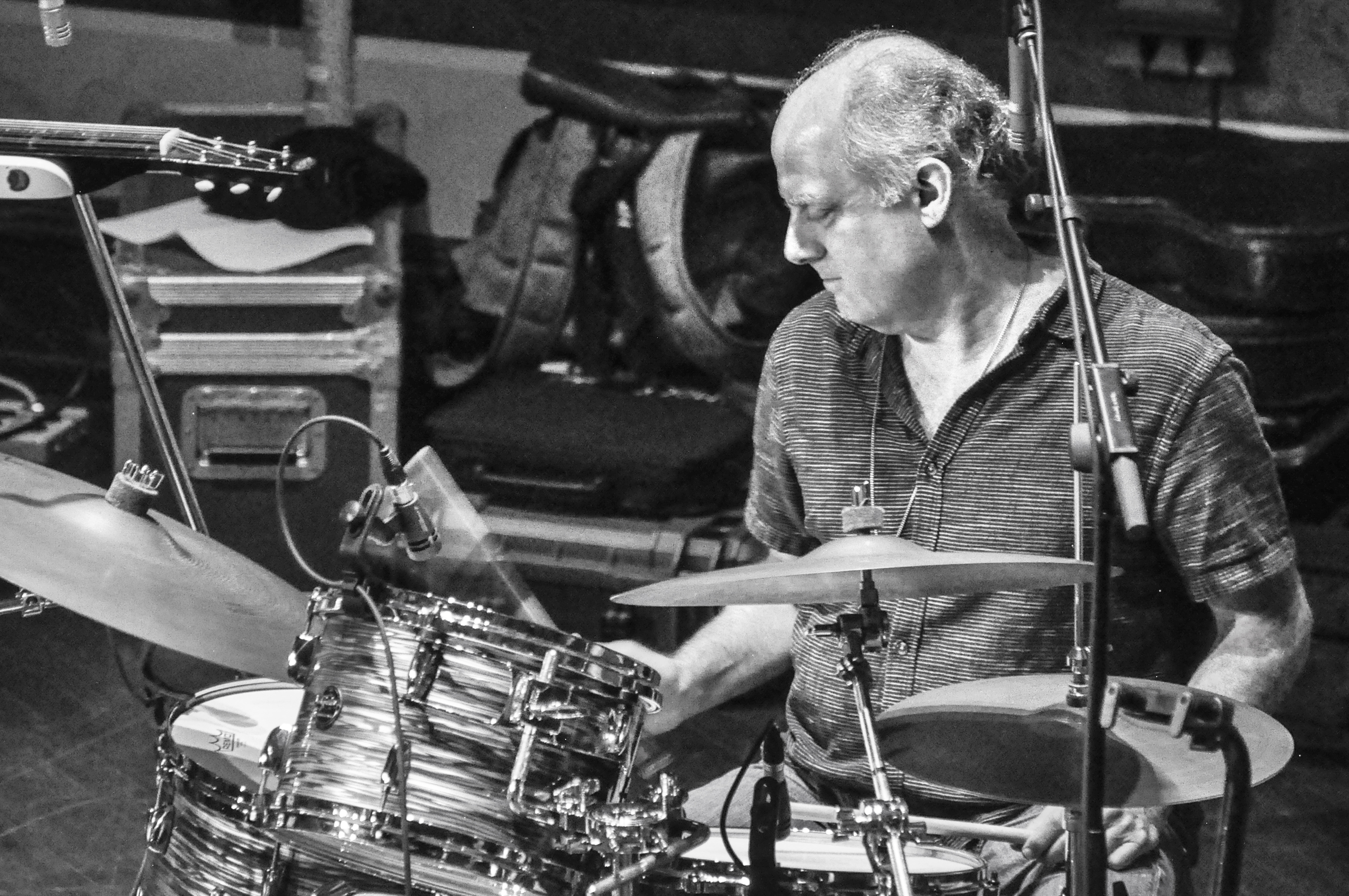
Following a momentary lull after the main melody resolve at the end of “Cat”, the band dialed up a faster country backbeat and moved right into a ripping “Cumberland Blues”, which gave banjoist Rodgers his chance to step out front musically and lead the full-on firework display. With his claw-hammer attack, he steered the band through the changes of the multi-part, bluegrass tour de force. (Although it was instrumental, the melody lines that Rodgers played were so strong that every word from the original song played on the soundtrack in my mind.) For sure, the entire band showed what was ‘in their wallets’ on “Cumberland”, but again, to my ears, it was Lavezzoli who asserted himself as the nuclear reactor of the rhythm section.
Although “Cat” is a deeply sentimental favorite of mine that I’d never heard in a show and the follow-up of “Cumberland” proved to be an obvious crowd-pleaser, the first real stunner for me was the back half of that first set. This was a full arrangement of the GD’s epic “Weather Report Suite”. (GD’s original on Flood was a sprawling 13 minutes, but JID’s version was tricked out to 20-plus minutes.) Again, smack dab in the middle of my GD sweet spot in the ‘70s, this deep track from Flood took me to a different place in time and in my mind.
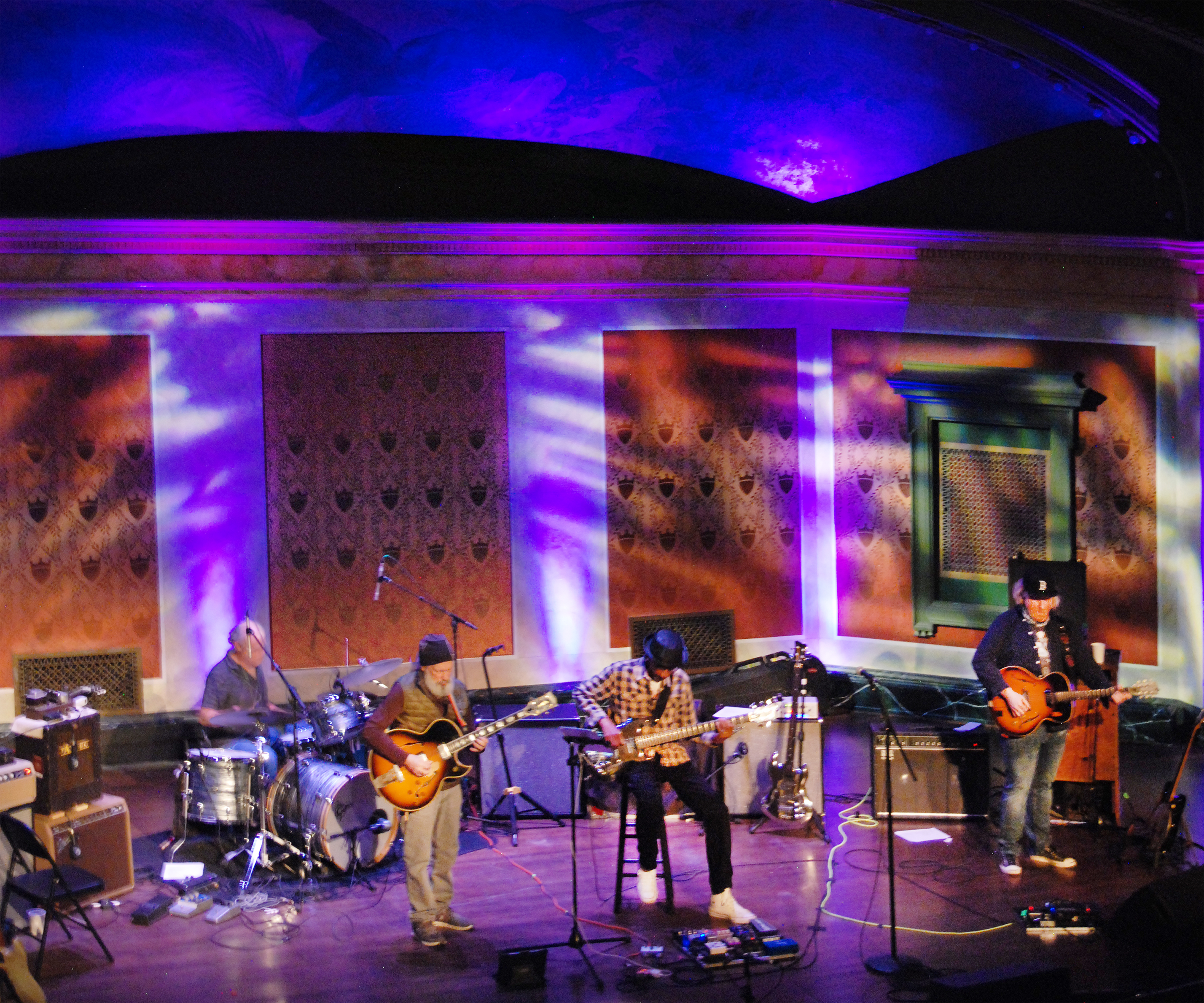
In the reflective “Prelude” section of “WRS”, Kimock painted the mood first with a melancholy, late-‘60s Peter Green/Fleetwood Mac-flavored lead line. Then, after reaching for a guitar slide, he sweetened the vocal melody with a more Garcia-like slide passage as the intro progressed. In the second part came the more dynamic and propulsive song form of “Let It Grow”, with the whole band charging through the many verse/chorus climaxes and solo sections.
To me, with its quasi-Southwestern musical form and melodies, the entire composition has always evoked a nostalgic feeling of an era passed, perhaps a long-gone Golden Age of civilization and prosperity. (It reminds me of the multi-generational perspective of the book “One Hundred Years of Solitude”, by the legendary Colombian author, Gabriel Garcia Márquez.) But – at the same time, with its references to seasons and elemental forces – it has always, for me, expressed a sense of awe for the unchanging Eternal. It’s all there in the original lyrics. “What shall we say?/Shall we call it by a Name?” rang in my head.
Interestingly enough, hearing it that night for the first time as an instrumental piece without the narrative effect of the lyrics, I keenly sensed more of the primal nature of the song’s raw elements. At times, Kimock’s soaring, John Cippolina-esque electric lead lines, and cascading rhythmic chord shapes transformed the already grand music into something approaching a classical form. Certainly, much of that harmonic genius came from Weir’s composition which suggests an influence from Mexican folk music and Garcia’s own historically-toned phrasing in the song. But through the extension of the passages and more penetrating playing, JID found new tension-and-release points in this complex piece. It was a heroic and thrilling journey, well placed in the second half of the set. It was my first true jaw-dropping moment of the night.
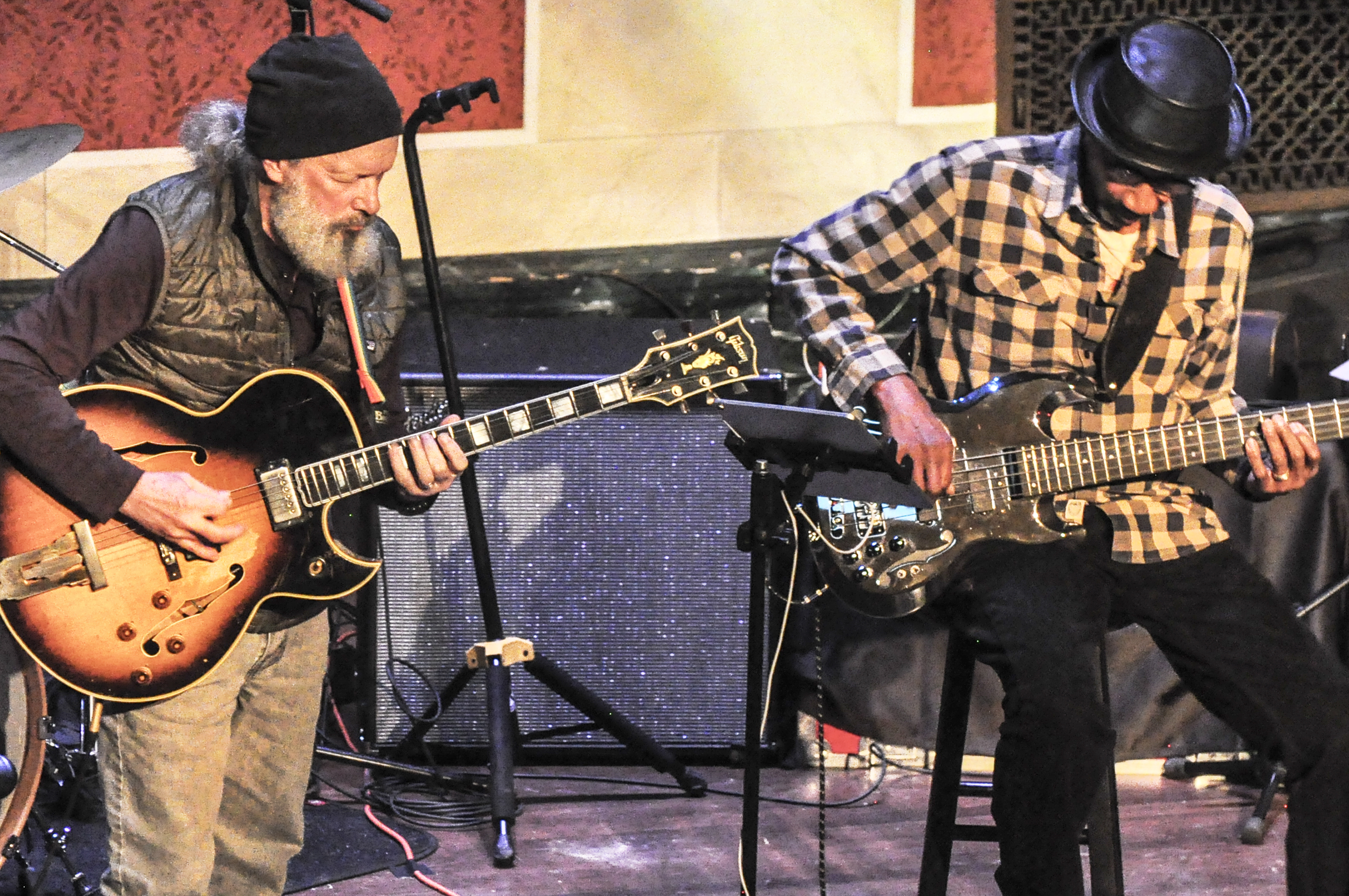
One side note is that I know it wasn’t the first time that JID have played “Weather Report Suite,” but I did have a funny realization about it at the time. Knowing that bassist Alphonso Johnson was once an early member of the legendary jazz-rock fusion band Weather Report in the early 1970s, I just had to smile at the coincidence of his being part of this line-up and that song’s inclusion in the show. Maybe I missed them, but I didn’t hear any WR song teases (Too on the nose, perhaps?), so it was just a straight, reverent reading of GD’s original composition. If any WR musical teases were tucked in, and any of you who happened to be there and might have noticed them, maybe you could kindly point them out to me!?
That first hour – which felt much longer and, yet, had gone by in the blink of an eye – was over, and the band had only played four songs. (Five, if you count the two parts of “WRS” as two songs.) Imagine that! But every song that JID had played so far was brimming with energy and marvelous musical invention. I hadn’t had even had as much as a Bud Light that night (I usually don't when I'm doing photo work.), but my buzz – especially after that stunning “Suite” – was in full swing by the time intermission had come. I then migrated from my first seating position in the center of the balcony and scouted a new spot for photos in the second half that would give me a different perspective on the musicians’ on-stage interactions and different photo compositional options.

This proved to be a wise choice. In this intimate venue, even listeners on the balcony can enjoy the feeling of in-your-living-room energy and immediacy. Trust me, from my own numerous experiences there, I can say that it’s practically like being right on stage with the performers. But my decision to move to a corner of the balcony was rewarding in that it helped to set the stage for the electricity about to come in the second half. I clearly felt the difference just by moving halfway around the balcony.
As a bass player, Alphonso Johnson has cut a major career path for himself, having not only played with Weather Report in their formative days (pre-Jaco Pastorius) but also touring and recording with Santana, Chet Baker, Billy Cobham, Phil Collins, Bob Weir, Chuck Mangione, and The Other Ones. And, of course, he has also been a rotating member of Jazz Is Dead since the late ‘90s. Yet I had only heard his work on recordings and had not seen him live. So, admittedly, I had expectations that he’d be more of a leading instrumentalist in the JID mix, perhaps more in a more dominant, Stanley Clarke-like vein. Interestingly, in that first half, he had largely shown himself to be a team player, serving the music first and supporting his fellow musicians, not being a lead ‘voice’ as such. It was in the second half, however, that his real genius began to shine for me.

Things quickly set off into a funkier direction in Set 2 with the opening instrumental jam of “Shakedown Street.” Between Kimock and Johnson, the two musical partners must have at least a dozen guitar pedals at their feet, and on this smoky, R&B-infused jam, they put many of their effects – wah-wah pedals, for sure – to good use. Johnson’s instrument, in particular, became a centerpiece as he stepped up to his pedals about midway into the nearly 20-minute jam and dialed up some different sounds. During this time, he led the band through a key modulation in a more formless passage for several minutes before returning to the song’s signature turnaround near the end.
Coming out of that modulated section, Rodgers took over on the guitar lead with Kimock dutifully sketching in R&B chords behind him, but then, for the outro, Johnson stepped forward and played a voice-like solo with his wah-wah pedal while his bandmates carried the disco-fusion groove behind him to the very end. Throughout the entire jam, lots of groovy, almost B.B. King/Chicago blues call-and-response worked around the stage, very liquid, like a lava lamp in full flow. Nice and slippery! Old music, sounding vintage and modern at the same time. It was a great gateway to the second half.
Next, like clouds clearing slowly after a thunderstorm, the band drifted into a wispy transition full of “Space”-like skitterings, mallet rolls and cymbal rushes that soon revealed itself to be a soulful cover of Garcia’s much-loved 1972 solo track, “Bird Song.” (At the first sign of the song’s melodic hook, which crept in on Johnson’s stealthy low end, a wave of applause and whistles rippled through the audience.) And, once again, the 20-minute threshold seemed like a mandatory time marker for the quartet as this jam easily hit that mark again.

Again, a key strength of JID on this was their keen appreciation of timeless melodies of these many GD songs. And, in the case of “Bird”, even though there were no vocals, it was again very easy to hear all of the words play back mentally. Knowing that Garcia and Robert Hunter had written the song initially in honor of their friend and musical legend Janis Joplin, and also counting it among my most favorite Garcia/Hunter songs, I felt as though JID were paying tribute to all three musical pioneers in one full stroke. Kimock and Rodgers teased out many sweet melodic phrases and took us some distance away from the root melody, but they never let it float away completely.
“King Solomon’s Marbles/Stronger Than Dirt” came next in with a jazzy drum intro that soon broke into the well-known GD instrumental with its snappy opening and closing guitar riffs. Here, again featuring Johnson in a central role, the band took flight after the song’s unmistakably snappy intro. Rodgers – playing electro-acoustic hollow body this time on the first solo section and taking leads with that watery keyboard warble to his notes – called to mind the terse interjections suggestive of Garcia’s banjo-like phrasing used on the GD original. And during the second solo, Kimock played in a more open, less frenetic, Dickie Betts-type jazz-rock style with lots of moveable chord shapes and short melodic phrases. But, unlike on that opening “Shakedown”, the band stuck generally more to the template of the original “Marbles” composition while still exploring its outer harmonic margins.
As on the original, the time signatures of “Marbles” shift around from variations of ‘four’ time, including 5/4, 6/4, and straight 4/4, and the musicians proved they were all on their toes, catching all the ‘ones’ and arriving together on time. It’s such an easy song for anyone to slip up and slip out of time on, and when everyone hits their marks, it’s an exhilarating showpiece of musical ebb and flow. (I had also heard Furthur do it once, in 2010, and that also was an outstanding version. And, of course, that performance included one of its three main co-authors – Phil Lesh! So that certainly had given it some grounding and made it special for me.).
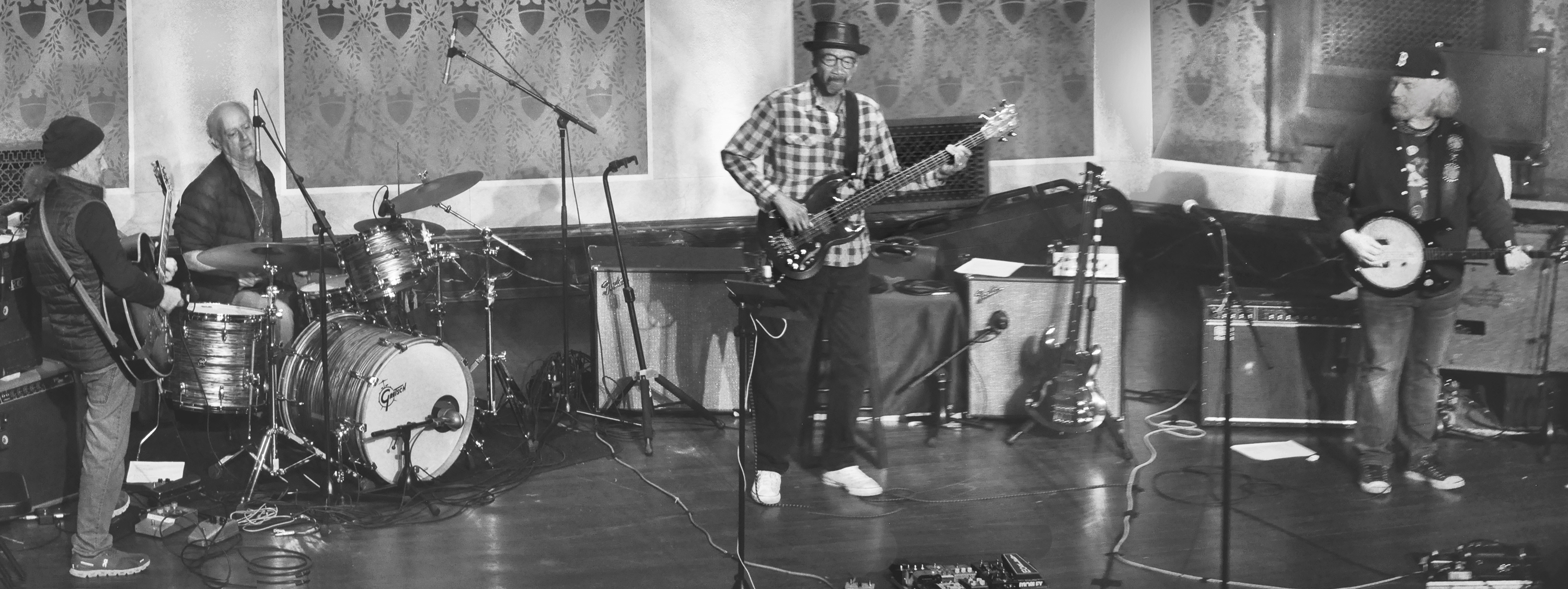
Johnson was brilliant, too, in showing more of his improvisational skills in a complex rhythmic framework. Seemingly, he preferred to play downscale counterpoints to the ascending phrases from the two guitarists, maintaining harmonic tension. There were definitely moments where Johnson’s jazz chops asserted themselves, as the music stopped being rock and went outside of the genre even when the song remained inside the lines. So, it was a vivid meeting of the musical minds, for sure, and especially gratifying for me, since the rhythmic complexity of the song is what I found so compelling about the Dead in that Blues for Allah period. (I always wanted them to plunge further in that direction.) I’d say with “WRS”, "Bird Song" and then “Marbles”, I was feeling damned happy about my song luck so far. When JID played the final tag of repeated percussive snaps at the end, and before the audience could applaud, I even shot up on my feet and shouted in a loud bird call, “Cawwwwwww!”, just like on GD’s 1975 studio recording. (I wondered if they could hear me?)
The holiest, most spiritual sequence of the evening for me, however, was still to come, and it arrived as the band quieted down one last time for the extended, set-closing rendition of “Stella Blue”, a true high-water mark in the songwriting of Garcia and Robert Hunter.
I first heard “Stella Blue” in 1975 and – being the sucker for those funeral-procession-type pieces that I am – I loved it immediately. Then, when I saw the Dead in Cincinnati in June 1986 – less than two weeks before the onset of Garcia’s untimely diabetic coma that year, “Stella” was an encore song for that outdoor summer show. I stood on the lawn of that shed venue that night, without a poncho, as rain began to gently sprinkle down at the end of the show. I was lightly soaked, but by that point, I didn’t care at all. I had long felt that Garcia’s performance was a perhaps unconscious cry from the heart that took on more significance after news of his health crisis had been reported so soon after that. (I’ve often wondered whether he had sensed anything ominous was waiting around the next bend for him.) Certainly, that moment was a cherished memory for me!
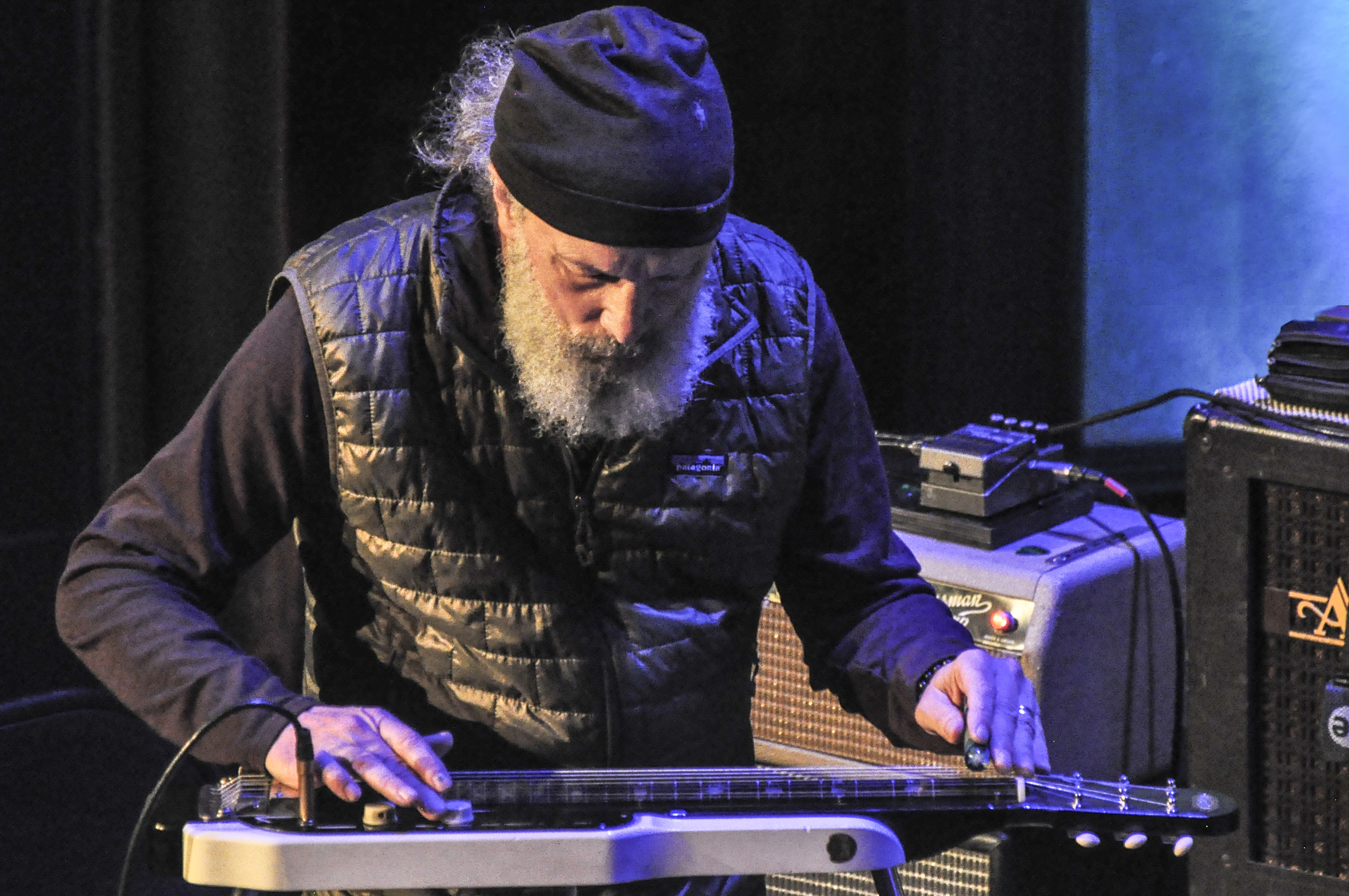
Obviously, as an instrumental piece, JID took the song into a whole new space, with guitarist Kimock employing a hauntingly delayed lap steel for the melodic lines and teased out solos. The mood was very slack-key, with a strongly hallucinatory David Gilmour flavor. This time, it was unmistakably Kimock’s showcase, with Lavezzoli keeping a light-but-steady hand on the percussion and Johnson providing dramatic tension in his voice-leading bass walk-ups between the verses and choruses.
Of course, Rodgers’ processed guitar tones provided a watery, Floydian counterpoint that suited the haunting slide melody perfectly. Words fail me to capture how sublimely heartbreaking that was, bittersweet in the best way possible, and it closed an emotional circle that Garcia first opened for me with that one 1986 performance. Obviously, for Kimock, who is known for having a longtime bond with Garcia when they were peers, the performance was almost like a prayer to his long-lost friend.
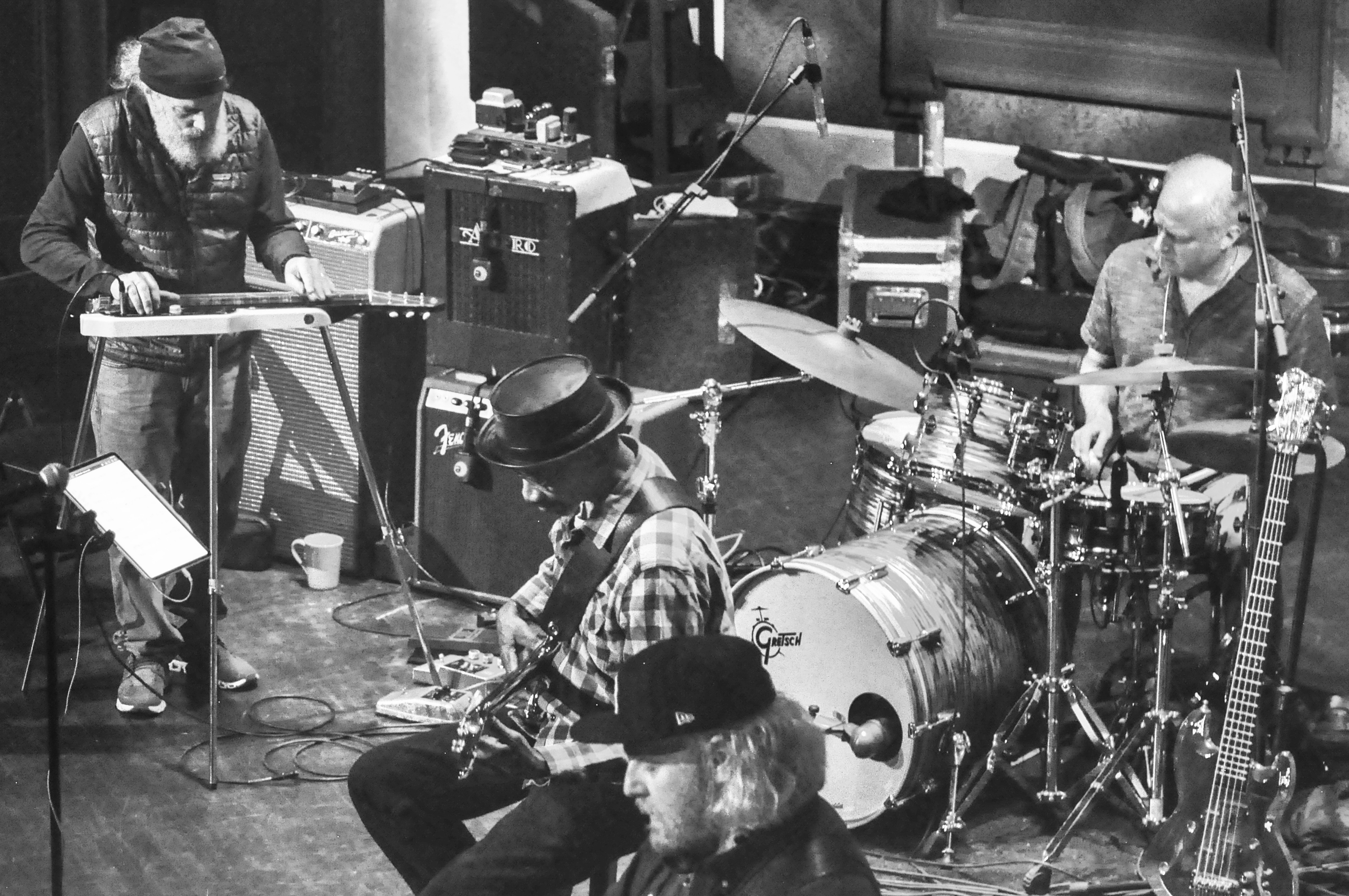
For me, it also called to mind Garcia’s crystalline lap steel performance on the David Crosby song, “Laughing”, from Crosby’s 1971 debut album, If I Could Only Remember My Name. (A true masterpiece.) Indeed, in this keen musical moment in Cincinnati, emotions and past associations flowed outward from the stage, around all of us, allowing older listeners like me to feel all these personal musical connections coming back to life. It also conjured new images in my mind of breaking waves on a tropical island, which is also not that far off from Crosby’s affinity for sailing. So perhaps Kimock was stirring up another ghost while he was at it.
The Christmas tree shone on the opposite side of the stage, just beyond Kimock, and its reflection shimmered in the polished stage flooring just beside him. Yes, it was spectral, but comforting, too, and I felt another presence in the room besides the musicians and the audience.(There were no special stage effects, but drifting dry-ice smoke would not have been out of place!) Truly, with his tone and phrasing, Kimock made me feel as if the song’s author himself was in the room and playing. Truly, it was almost as if Garcia was the Ghost of Christmas Present!
At the conclusion of that celestial “Stella” performance, the band moved into what was quite obviously ‘encore mode’ without leaving the stage. Simply taking a quick ‘breather’ and swapping off lap steel for another six-string, the four musicians signaled that they were ready to rock. And, fittingly enough, with plenty of grey hair to go around on stage, and a good number of grey-streaked heads in the audience, the band launched into Garcia's and Hunter’s timeless ode to survival, “Touch of Grey”.
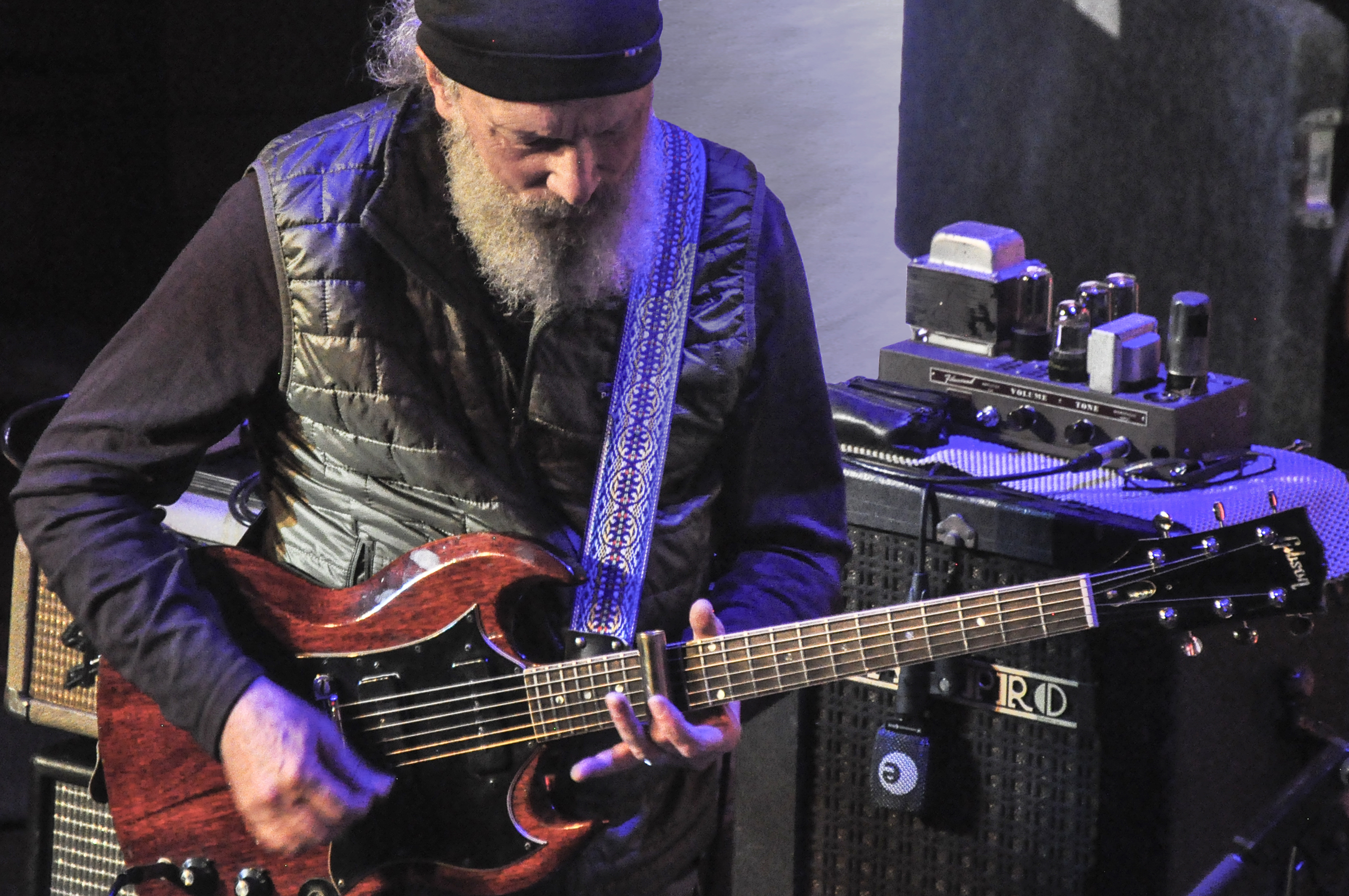
As on several earlier songs, Kimock switched guitars for a different sound, finally bringing out his classic, burgundy-red Gibson SG and a metal guitar slide for this final workout. Before the first note was played of what I rightly assumed would be the sole encore song, I thought to myself: “OK! Now this one’s gonna be some rock ‘n’ roll.” And, indeed, it was – full of blazing slide licks and barreling refrains.
Finally, as the band stepped out from their gear and made their round of band introductions, point man Johnson expressed deep gratitude for the strong, weeknight turnout and generous response of the audience. (It was a nearly-sold-out show.) So it was not just another gig, not just another night of checking all the boxes, but actually an arrival at and dwelling in the presence of many powerful musical moments. As members took their bows and basked in the eager applause, Johnson said with a laugh, “We’re very grateful. . .heh!. . .no pun intended!”
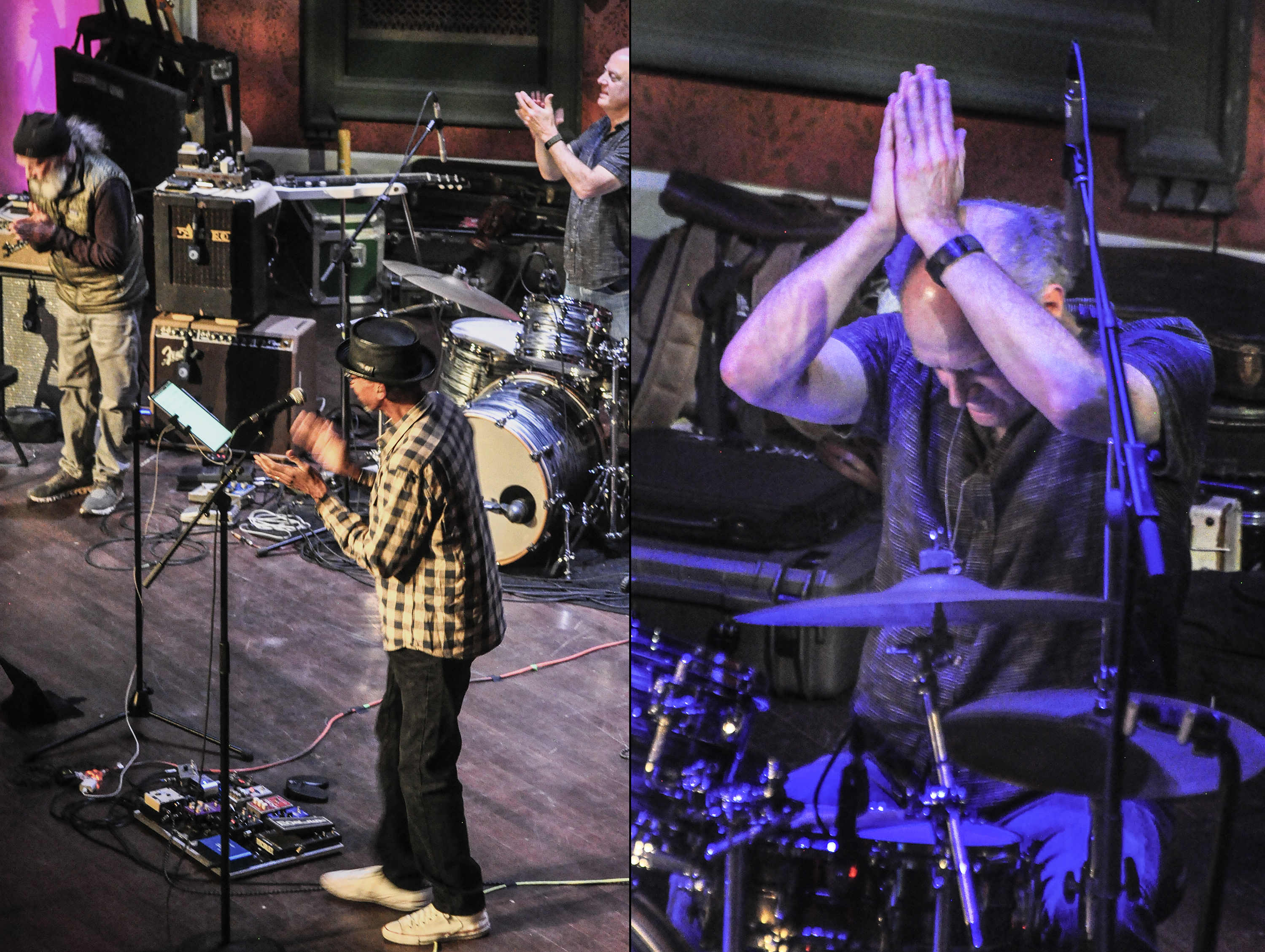
I do have to add that since I know the venue well from having seen other shows there, I believe the intimacy is a major boost for performers and audiences to merge as one. Personally, I always enjoy it when I hear musicians making full use of the acoustics in such a venue, in the truest sense of ‘playing the room’, using the dynamics as another instrument. And in that regard, I was most impressed with JID’s performance, especially with how Kimock played the long notes of “Stella” against the reverb of the room. Ironically, and perhaps most of all because of the Christmas tree lighting, the vibe of the night was very”church-y", definitely a spiritual experience that perhaps would never come across in streaming videos online. Yet, very soul-stirring, far from sedate. It was definitely a night you had to be there for, and I’m truly as glad as the musicians that I could be there.
If you saw any of the other shows on JID’s fall tour, you might have heard completely different songs, or even some of the same ones as we got to hear, here in Cincinnati. So you’d have some idea why my synopsis was so rosy in hue. And if you haven’t seen them perform yet and you have any personal connections to Grateful Dead music, or even if you don’t, spending a night with Jazz Is Dead would be time very well spent, just for the sheer musical adventurousness of their performances. I will definitely want to see them again – every chance I get.
Note to self: “Next time you get to see Jazz Is Dead, skip the photos, man. You don’t want to miss a note!”





